Hanoi, the vibrant capital city of Vietnam, offers a mesmerizing fusion of rich cultural heritage and modern urban life. As one navigates this bustling metropolis, the importance of public transportation becomes immediately apparent. Offering a plethora of options that cater to both locals and tourists, Hanoi's public transportation system efficiently connects residents to the city's extensive network of attractions, markets, and neighborhoods. From the historic Old Quarter to the serene Hoan Kiem Lake, getting around is both accessible and affordable. The city's streets are alive with a symphony of honks and chatter as people traverse the thoroughfares in search of adventure, providing endless opportunities for exploration. Whether you are aiming for the best street food or seeking a quiet moment by the lake, Hanoi’s public transportation allows for an engaging experience unlike any other.
In Hanoi, the public transportation system is diverse, featuring multiple modes including buses, taxis, motorbike taxis (xe om), cyclos, and ride-hailing services. Each of these options provides distinct advantages tailored to different needs, budgets, and travel preferences. Public buses serve as the backbone of the transportation network, known for their extensive routes and low fares. Taxis and ride-hailing services like Grab offer convenient alternatives, while motorbike taxis and cyclos provide a more traditional and intimate way to experience the city's streets. Taken together, these modes create a dynamic transport landscape that facilitates seamless journeys throughout Hanoi. Navigating this bustling city becomes less daunting with so many options available, whether you're a newcomer or a seasoned traveler.
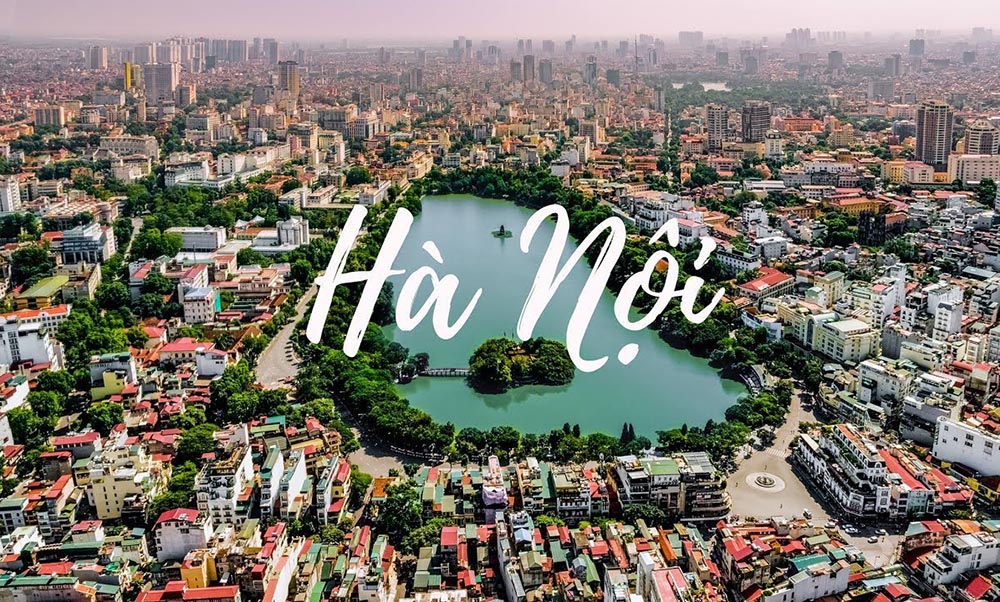
Hanoi's public transportation can be compared to a well-orchestrated concert where each instrument plays its part, contributing to the overall harmony of the city's transport experience. The key players are summarized below:
Buses: The most economical option, Hanoi's bus network is extensive and covers numerous routes connecting urban and suburban areas. With fares ranging from 7,000 to 10,000 VND, buses are a popular choice for budget-conscious travelers. Key routes, like Bus 86, serve express purposes, providing direct access to the airport while merging affordability with convenience.
Taxis: While taxis are generally more expensive than buses, they offer door-to-door service and faster transportation times. Metered taxis tend to be the safest option for navigating the city quickly.
Motorbike Taxis (Xe Om): A thrilling and fast way to navigate traffic, xe om services are readily available throughout the city. Prices are negotiable, usually around 10,000 to 15,000 VND per kilometer. This mode of transport garners excitement as riders can zip through traffic effortlessly, experiencing an adrenaline rush that's uniquely Hanoian.
Cyclos: With their charming, traditional appeal, cyclos provide a leisurely and scenic means of transport in tourist areas. Although more expensive than motorbike taxis, they offer an intimate look at the city's streets, perfect for those wishing to soak in the sights.
Ride-Hailing Services: Modern applications like Grab offer an efficient way to summon rides via smartphone, with options ranging from motorbikes to cars. This ease and transparency in fare pricing have made ride-hailing a favorite among locals and visitors alike.
The interplay of these various transportation modes illustrates a nuanced public transport system rooted in both functionality and local culture.
Hanoi's transportation system relies on several key hubs, which serve as vital gateways for both inbound travel and commuting within the city. These hubs enhance connectivity, streamline traffic, and ensure efficiency in transportation.
Hanoi Railway Station (Ga Hà Nội): This historic station is the central hub for train travel, connecting Hanoi to major cities across Vietnam. The station itself, renovated after sustaining damage during conflict, showcases architectural significance while serving as a modern transport center. With routes such as the Reunification Express to Ho Chi Minh City and direct services to Sapa, rail travel from this hub is both varied and convenient.
Noi Bai International Airport: Serving as the city's primary international airport, Noi Bai is well connected to Hanoi's public transport options. Bus lines, taxis, and ride-hailing services operate seamlessly, ensuring easy transitions between air and ground travel.
Major Bus Terminals: Key bus terminals, like Giap Bat Station and My Dinh Station, serve as transfer points for both intracity and intercity buses. These hubs allow easy access to various bus lines, catering to travelers and commuters alike seeking to navigate the city or embark on longer journeys.
These transportation hubs, each with unique characteristics and functions, collectively contribute to the fluid and accessible nature of Hanoi's public transport landscape.
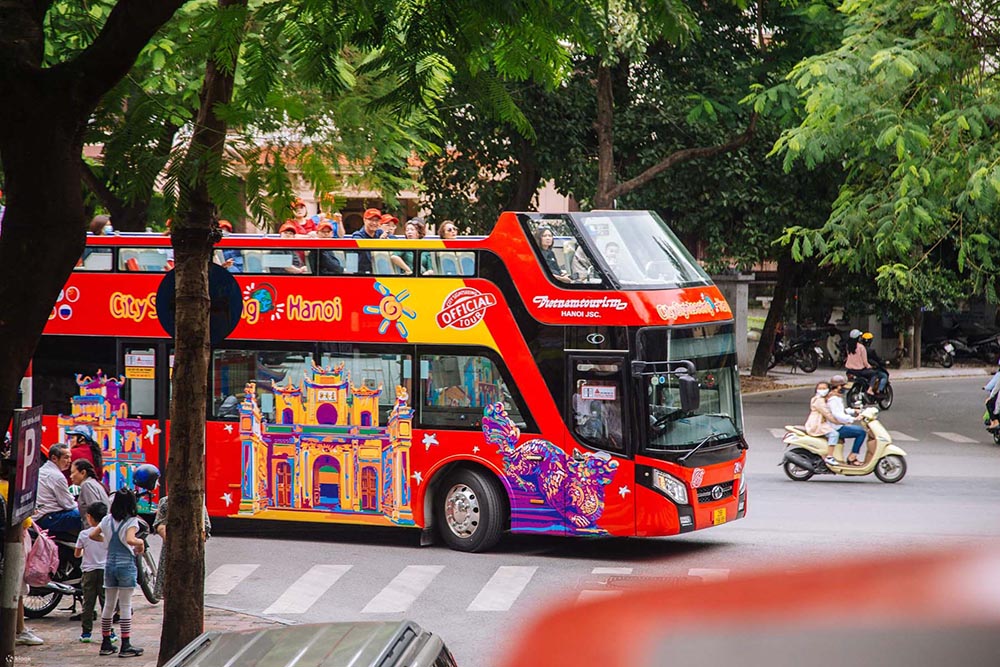
Within the realm of public transportation, the bus system in Hanoi stands as a pillar of affordability and accessibility. Dominating the urban landscape with its vivid red, yellow, and white buses, this network is essential for both residents and travelers. Buses provide services across numerous routes, connecting not only popular attractions like Hoan Kiem Lake, but also the quieter, local districts of the city.
The variety of bus services mirrors the ingenuity of Hanoi's bustling streets. The buses are generally categorized based on their routes and operational characteristics, allowing travelers to choose according to their needs:
Standard Buses: These are the primary means of low-cost travel. Standard buses primarily cater to daily commuters and tourists alike, with routes sprawling across various neighborhoods and attractions. An example is Bus 09, which services areas popular with visitors.
Express Buses: For those looking to minimize travel time, express buses like Bus 86 between Noi Bai International Airport and the Old Quarter provide a comfortable option, ensuring rapid transit with minimal stops.
Night Buses: Catering to night owls and late-night revelers, night bus services operate less frequently but allow travelers to navigate the city when other forms of transport are limited.
Air-Conditioned Buses: For added comfort, some routes feature air-conditioned buses. These are especially appreciated during the warmer months when temperatures soar, making the journey much more pleasant.
| Bus Type | Features | Typical Fares |
|---|---|---|
| Standard Buses | Frequent stops, connects neighborhoods | 7,000 - 10,000 VND |
| Express Buses | Faster routes, fewer stops | 30,000 VND (Bus 86) |
| Night Buses | Limited schedule, caters to night travelers | 8,000 - 15,000 VND |
| Air-Conditioned Buses | Comfortable travel | 15,000 - 20,000 VND |
Each bus type serves a vital role in making public transport a reality for millions of commuters and tourists traversing Hanoi daily.
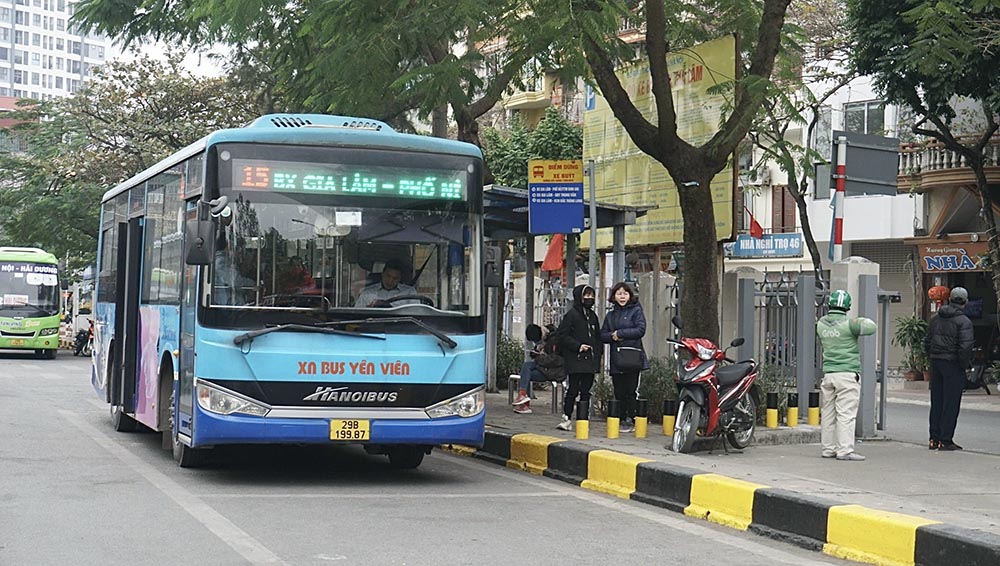
The affordability of Hanoi's bus system is one of its most appealing characteristics. Prices are structured to accommodate different budgets while ensuring easy access across the city. Bus fares generally range from 7,000 to 10,000 VND for standard journeys, with express routes like Bus 86 charging a flat fee of 30,000 VND. Cash payments are made directly to the fare collector on board, which adds a personal touch to the experience.
For those wishing to plan their journeys meticulously, payment through digital platforms is a trend that is gradually emerging. As the city modernizes, there may be a shift toward electronic payment systems for bus fares, enhancing convenience and efficiency.
Key Points on Bus Fares:
The affordability and ease of payment methods ensure that navigating the city is feasible for everyone, paving the way for tourists and locals to explore Hanoi more freely.
Understanding the popular routes among tourists is essential for maximizing exploration of Hanoi's rich culture and vibrant cityscape. Several routes stand out as favorites for those wanting a taste of local life while visiting key attractions.
Bus 86 (Airport Express): This express service connects Noi Bai International Airport with the Old Quarter, charging around 30,000 VND for about a 50-60 minute ride. Its frequent operation makes it a crucial service for travelers arriving or departing by air.
Bus 09: A fantastic route for experiencing Hanoi's charm, it connects the Old Quarter with Hoan Kiem Lake and various scenic spots, all for a budget-friendly price.
Bus 14: Specifically designed for tourists, this route offers stops at several notable landmarks, making it perfect for those eager to explore Hanoi's historical and cultural sites.
Bus 34: This bus runs through popular tourist spots like the Temple of Literature, allowing easy access for travelers eager to uncover the stories of Vietnam's past.
| Popular Routes | Destinations | Approx. Duration | Fare |
|---|---|---|---|
| Bus 86 | Noi Bai Airport to Old Quarter | 50 - 60 minutes | 30,000 VND |
| Bus 09 | Old Quarter to Hoan Kiem Lake | Varies | 7,000 - 10,000 VND |
| Bus 14 | Notable landmarks across the city | Varies | 7,000 - 10,000 VND |
| Bus 34 | Temple of Literature and cultural hubs | Varies | 7,000 - 10,000 VND |
These routes not only provide practicality but also ensure that tourists enjoy the hospitality and essence of Hanoi as they take in the sights along the way.
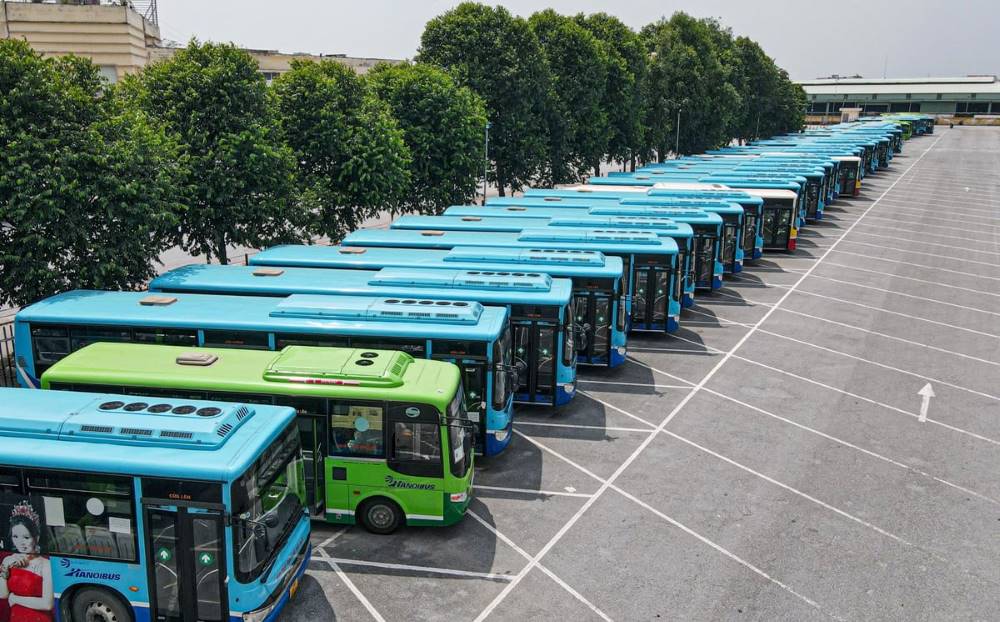
Taxis are a pivotal part of Hanoi's public transportation matrix, providing an accessible means for tourists and locals alike to traverse the city. The ease of hailing a cab adds a layer of convenience, making it a favorable choice when compared to buses, especially in unfavorable weather or when time is of the essence. Taxis in Hanoi, with their universal presence, cater to diverse travel needs, from quick local trips to longer journeys across the city.
The diversity of taxi services in Hanoi allows passengers to choose from various options based on preference, cost, and convenience. Here’s a breakdown of the types of taxis you can find:
Traditional Metered Taxis: This is the most conventional type, recognized by their distinct color schemes. Reputable taxi companies, such as Mai Linh and Taxi CP, offer metered fares that start at approximately 10,000 to 15,000 VND for the first few kilometers.
Ride-Hailing Taxis: Applications like Grab have reshaped the taxi landscape in Hanoi, enabling users to book rides directly from their smartphones. This method allows for fare transparency and real-time tracking, enhancing the overall user experience.
Luxury Taxis: For those desiring a more elevated experience, some services provide luxury vehicles at a higher cost. These taxis are ideal for business travels or special occasions when comfort is paramount.
Airport Taxis: Specially designated taxis at Noi Bai International Airport ensure that passengers receive a reliable taxi service post-arrival, which is critical for new travelers unfamiliar with the city.
| Taxi Type | Features | Starting Fare |
|---|---|---|
| Traditional Metered Taxis | Dependable service, available on the street | 10,000 - 15,000 VND |
| Ride-Hailing Taxis (Grab) | App-based booking, upfront pricing, convenience | 10,000 - 15,000 VND |
| Luxury Taxis | Enhanced comfort for business or special occasions | Varies by provider |
| Airport Taxis | Reliable for travelers from the airport | 10,000 VND+ |
Each taxi type serves a different segment of the population, ensuring that transportation needs are met regardless of passenger requirements.
With multiple taxi services operating in Hanoi, knowing how to identify reputable companies is crucial to avoid scams. As a traveler in an unfamiliar city, following these guidelines ensures a safe and pleasant experience:
Check for Clear Branding: Reputable taxis are typically branded with distinct logos and color schemes. For example, Mai Linh taxis are green while Taxi CP has a red and yellow scheme.
Look for License and ID: Each taxi should display licensing information and the driver’s identification. Ensuring that the sign is visible is essential.
Meter Usage: Always ensure that the driver's meter starts at zero when you begin your ride. This is the best way to avoid being overcharged.
Use Designated Taxi Stands: Whenever possible, hail a taxi from official ranks at hotels or major tourist sites. This helps in ensuring that you are getting a legitimate service.
| Safety Tip | Advice |
|---|---|
| Check for Clear Branding | Confirm the taxi is part of a reputable company |
| Meter Usage | Ensure the meter is set to zero at the journey’s start |
| Use Designated Taxi Stands | Always hail from official locations |
By following these tips, passengers can confidently navigate Hanoi’s taxi services and enjoy seamless transportation throughout their visit.
Understanding the pricing structure of Hanoi's taxi services is vital for enjoying a smooth ride. Taxi fares typically consist of a base fee plus a per-kilometer charge, structured as follows:
Nighttime fares usually do not differ from daytime rates; however, caution is warranted because some drivers might attempt to overcharge travelers, especially unfamiliar passengers. Here are essential tips to avoid scams when taking a taxi in Hanoi:
Stick to Reputable Companies: Firmly trust established services like Mai Linh or Vinasun. These companies prioritize customer safety and integrity.
Monitor the Meter: Pay attention to the meter throughout your ride, as this helps viewers gauge if the fare progresses reasonably.
Use Ride-Hailing Apps: If concerned about misunderstanding or negotiating fares, use apps like Grab. These platforms provide upfront pricing and track your trips, ensuring a transparent experience.
Be Wary of Unmarked Taxis: If a taxi does not display official branding or seems suspiciously cheap, it is wiser to decline the ride.
With knowledge of pricing structures and savvy tricks to avoid potential scams, your experiences with taxi travel in Hanoi can transform into hassle-free adventures.
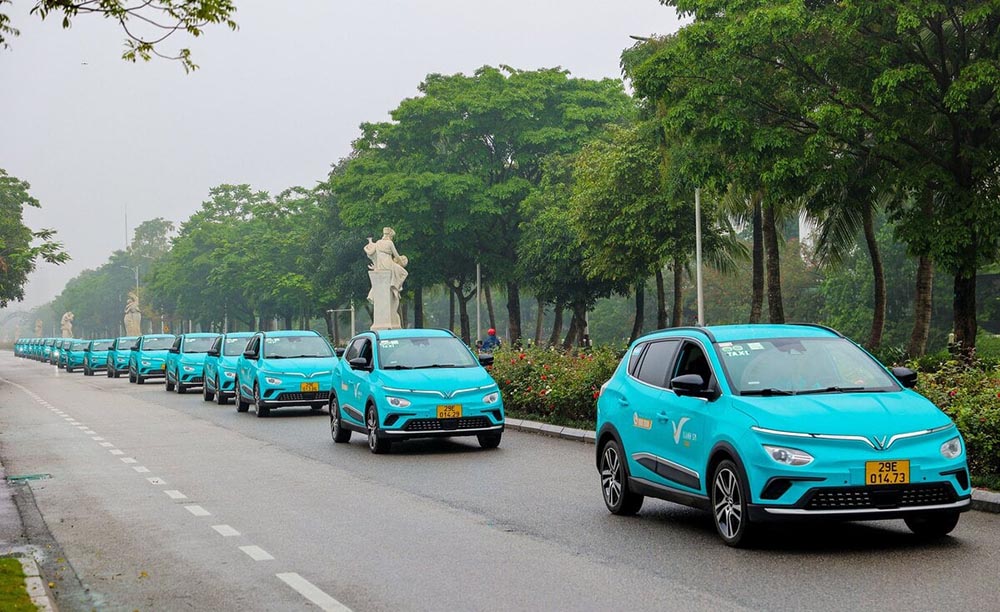
The advent of ride-hailing applications has dramatically reshaped how transportation operates within Hanoi. By combining modern technology with traditional taxi services, apps like Grab have offered a revolutionary way for both locals and tourists to navigate the city efficiently. Enhanced convenience, transparency, and reliability characterize these platforms, establishing a friendly rivalry against standard taxi services.
The landscape of ride-hailing services in Hanoi is dominated by several noteworthy apps, with each providing unique features tailored to user preferences:
Grab: The market leader in Southeast Asia, Grab is known for its user-friendly interface, wide range of services, and integrated payment options. In a survey, as of Q2 2024, approximately 53% of riders chose Grab for car rides, while 50% opted for motorcycle rides.
GoViet: A rising competitor, GoViet focuses on motorcycle taxis, providing a more affordable yet efficient option for navigating congested streets.
Xanh SM: Known for its eco-friendly vehicles, Xanh SM appeals to environmentally-conscious consumers looking for a sustainable transportation alternative.
Bee: Though newer to the market, Bee offers competitive fares and user incentives, capturing the attention of budget travelers.
| Ride-Hailing App | Features | Popularity |
|---|---|---|
| Grab | Comprehensive services, payment options | 53% car rides; 50% motorcycle |
| GoViet | Focus on motorcycle taxis | Rapid rise in user base |
| Xanh SM | Eco-friendly vehicles | Gaining traction |
| Bee | Competitive incentives | Appealing to budget travelers |
These applications not only provide quick access to rides but also play a significant role in the daily commutes of the city's inhabitants.
While both traditional taxis and ride-hailing services share similarities, they come with distinct differences that cater to varied preferences amongst consumers. Here’s an analysis:
Booking Convenience: Traditional taxis can be hailed on the street, but they may pose language barriers or fare uncertainties. In contrast, ride-hailing apps allow users to book rides from the comfort of their smartphone, leading to greater convenience.
Fare Transparency: While traditional taxis operate on a meter system, passengers may struggle with negotiations or fare estimations. Ride-hailing services, however, reveal EXCELS upfront pricing, allowing the rider to know what they will pay before confirming a ride.
Navigation Features: Ride-hailing applications come equipped with GPS navigation that posts real-time updates; this minimizes the risk of drivers taking longer routes to inflate fares a tactic that may occur with traditional taxis.
Payment Options: Traditional taxis typically require cash; however, ride-hailing applications allow for cashless transactions, enhancing convenience and minimizing hassle during busy periods.
| Feature | Traditional Taxis | Ride-Hailing Services |
|---|---|---|
| Booking Convenience | Hail on the street, may involve negotiation | App-based, easy booking |
| Fare Transparency | Metered, potential negotiation issues | Upfront pricing |
| Navigation | Driver's knowledge reliant | GPS-assisted routes |
| Payment Options | Cash transactions preferred | Cashless payments available |
Understanding these differences can empower users to choose the service that best aligns with their needs, whether opting for the familiarity of a taxi or the convenience of a ride-hailing app.

As a significant mode of public transportation, train services also enrich Hanoi's travel options. The railway system connects this dynamic city to various regions, enhancing access to rural landscapes and cultural hubs throughout Vietnam. Train travel encapsulates both a scenic experience and a viable long-distance transportation alternative.
Among the many landmarks that dot the landscape of Hanoi, the Hanoi Railway Station (Ga Hà Nội) emerges as a pivotal transportation hub. Constructed in 1902 and marked by its architectural significance, the station continues to play a vital role in connecting Hanoi to various parts of the nation.
Hanoi Railway Station: As the main station, it acts as the launching point for many domestic routes. The number of trains operating makes it convenient for travelers, offering services to popular cities and tourist destinations.
Strategic Location: Being just 2 kilometers from the Old Quarter enhances its accessibility, allowing ease of transfers from the bustling central area to rail adventures.
Facilities and Services: The station is equipped with ticket counters, waiting areas, shops, and food vendors, enriching the travel experience for both locals and tourists.
Cultural Significance: Beyond its transport functions, Hanoi Railway Station is a representation of the country's history and resilience, showcasing Vietnam's evolution and modernization through time.
| Station Name | Key Features | Destinations Offered | Historical Significance |
|---|---|---|---|
| Hanoi Railway Station | Key hub, multiple routes | Connects to Ho Chi Minh City and more | Established in 1902 |
| Strategic Location | Close to Old Quarter | Facilitates travel for tourists | Represents Vietnam's history |
| Facilities Available | Restrooms, shops, and ticket counters | Enhances commuter convenience | Cultural landmark |
Overall, these factors underscore the station's importance in traversing Vietnam's storied journey.
Hanoi serves as a nucleus for various train routes leading to popular destinations, making it a strategic choice for travelers exploring Vietnam. From the convenience of an overnight train to Sapa to scenic journeys to Ho Chi Minh City, rail travel offers a myriad of options.
Reunification Express: A highlight among train routes, this luxurious service connects Hanoi to Ho Chi Minh City, offering breathtaking landscapes along the way. The journey spans approximately 1,726 kilometers, taking about 33-36 hours.
Lao Cai Route: Particularly beneficial for those wishing to visit Sapa, an overnight train departs at 22:00 and arrives at 05:55, making it a lovely option for early-bird travelers.
Hai Phong Connection: Regular daily services (four per day) ensure access to this coastal city, with convenient schedules enabling tourists to effortlessly explore nearby destinations.
| Train Route | Destinations | Travel Time | Frequency |
|---|---|---|---|
| Reunification Express | Hanoi to Ho Chi Minh City | 33 - 36 hours | Five daily services |
| Overnight to Lao Cai | Hanoi to Sapa | 6 - 7 hours | Departing at 22:00 daily |
| Hai Phong Connection | Hanoi to Hai Phong | 2.5 hours | Four daily services |
By choosing to travel by train, the journeys become more than just transit options; they unfold into exploring the culture and charm of Vietnam.
When traveling by train in Hanoi, understanding fare structures is essential to make informed travel choices. The following outlines common fare ranges, typical costs for popular routes, and travel tips for an enjoyable experience.
Ticket Prices: Train tickets can vary significantly depending on the route, class of service, and time of travel. For instance, a trip to Hai Phong may start around $8, whereas journeys to Da Nang could cost approximately $67 for sleeper accommodation.
Reservations: It’s prudent to book tickets ahead of time, especially during peak travel seasons. Reservations can be made at the station or through reputable travel websites, ensuring you secure your spot during busy periods.
Daylight Travel: For those eager to absorb the scenery, try opting for daylight train rides. This provides travelers with the opportunity to enjoy the countryside view as the train winds through picturesque landscapes.
Travel Tips:
By keeping these factors in mind, travelers can ensure a memorable train journey through the heart of Vietnam.
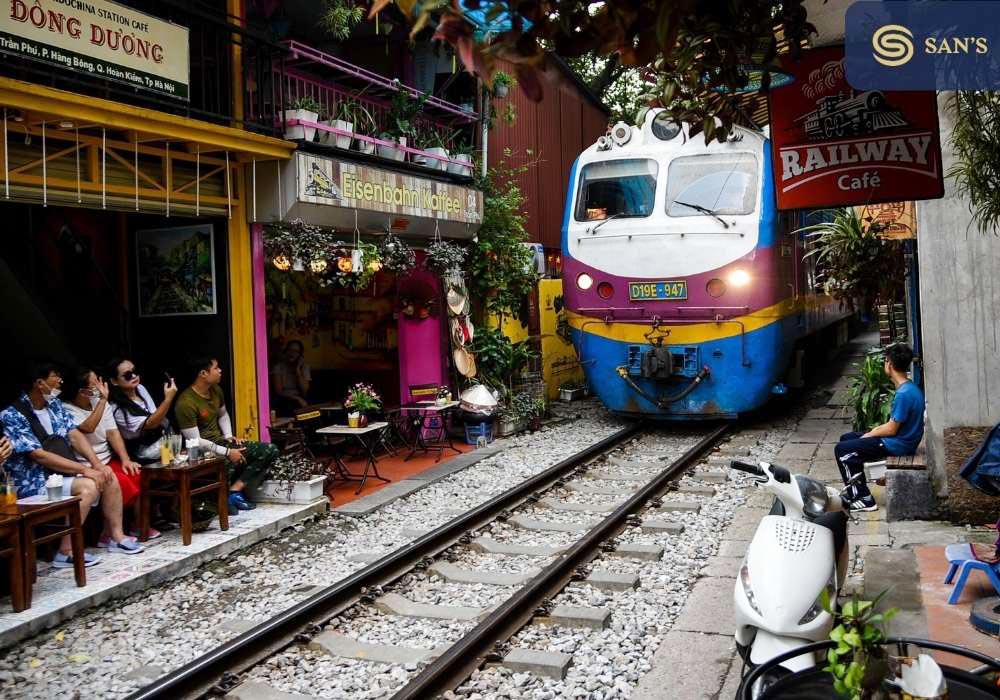
As Hanoi reveals itself through its vibrant streets filled with bicycles and motorbikes, two very distinct informal transportation fares emerge: cyclo and xe om. Each one not only offers unique characteristics and pricing structures but also encapsulates a sense of local culture while effectively navigating the city's pulsating traffic.
Cyclos and xe om represent the charming and historical modes of transportation that allow visitors to experience a piece of Hanoian life firsthand.
Cyclo: The traditional cyclo is a three-wheeled bicycle taxi where a passenger sits comfortably in the front while the driver pedals from behind. This leisurely ride offers not only a mode of transport but also an intimate view of the city, making it popular among travelers who wish to savor the surroundings.
Xe Om: The xe om, translating to “hug vehicle,” provides a rapid alternative for those in need of swift transit. These motorcycle taxis are prevalent, enabling passengers to navigate through dense traffic quickly. The thrill of riding pillion captures the essence of Hanoi's energy.
Both cyclo and xe om serve as lively modes of transport, offering a dynamic connection to Hanoi's bustling environment.
The pricing structure for cyclo and xe om services can differ significantly and may depend on various factors such as distance, negotiation skills, and time of day:
Cyclo Pricing: Typical costs for cyclo rides range between 100,000 to 200,000 VND per hour. Negotiating the fare beforehand is essential, as drivers may not always adhere strictly to set prices.
Xe Om Pricing: Xe om fares generally average around 10,000 to 15,000 VND per kilometer. As these fares are commonly negotiable, passengers should clarify costs before commencing the ride to avoid confusion later.
| Service Type | Price Range | Usual Duration |
|---|---|---|
| Cyclo | 100,000 - 200,000 VND | Varies, often hourly |
| Xe Om | 10,000 - 15,000 VND/km | Varies, based on distance |
Due to their unique pricing structures, both transportation options cater to different user scenarios, be it leisurely exploration or quick navigation through Hanoi's streets.
Safety is always a concern when using more informal transportation services like cyclo and xe om. Here are several essential guidelines to ensure a safe and enjoyable experience:
Cyclo Safety: Riding in a cyclo tends to be safer as it operates at low speeds. Nevertheless, passengers should remain vigilant of surrounding traffic and ensure they’re comfortable with their driver.
Xe Om Safety: Riding a motorcycle taxi, while exhilarating, requires a greater degree of caution. Always ensure that your driver provides a spare helmet and be aware of traffic patterns.
Communicate Clearly: Passengers should feel comfortable communicating their desired locations to the drivers, preferably using a written address if language barriers pose a challenge.
Choose Reputable Drivers: Engaging with known drivers found at tourist sites or areas with a strong reputation enhances the chances of a safe riding experience. Always opt for drivers who seem knowledgeable and professional.
| Safety Aspect | Cyclo | Xe Om |
|---|---|---|
| Speed | Slower pace, safer | Fast-paced, increased risk |
| Driver Communication | Clear directives encouraged | Written addresses are helpful |
| Helmet Provision | Not applicable | Ensure a spare helmet is provided |
| Choosing Drivers | Reputable drivers at tourist spots recommended | Opt for known drivers |
By being mindful of these safety aspects when choosing cyclo or xe om, travelers can enjoy the unique experiences these modes of transport offer while ensuring their safety throughout the journey.
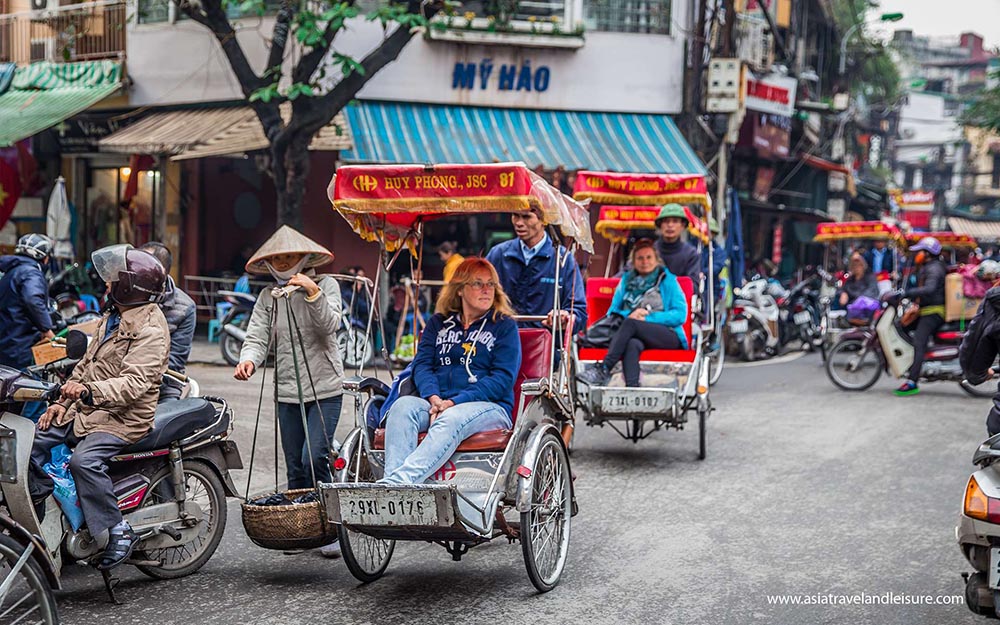
What are the most common forms of transportation in Hanoi?
The most common forms of transportation in Hanoi include buses, taxis, motorbike taxis (xe om), cyclos, and ride-hailing services like Grab.
How do I pay for bus fares in Hanoi?
Bus fares in Hanoi are usually paid in cash directly to the fare collector aboard the bus. It is advisable to have smaller denominations (no bigger than 20,000 VND) to ensure easier transactions.
How do I identify a reputable taxi in Hanoi?
To identify a reputable taxi, look for clear branding, licensing information, and ensure the meter starts at zero at the beginning of your ride. Reputable companies include Mai Linh and Vinasun.
Is it safe to use xe om in Hanoi?
While xe om can be safe, it requires caution. Always ensure the driver provides a helmet, and be aware of the chaotic traffic conditions. It's important to communicate your desired destination clearly.
What is the best way to get to the airport from the city?
One of the best methods of getting to Noi Bai International Airport from the city center is by taking Bus 86, which offers an express connection to the airport for a low fare of around 30,000 VND.
Public transportation in Hanoi stands as a testimony to the city’s vibrant culture and ongoing modernization. With a diverse array of options from reliable buses and taxis to the more traditional cyclo and xe om, every traveler can find a suitable mode of transport to match their needs. The ease of access, affordability, and extensive connectivity offered through the public transport network create a comfortable exploration experience, allowing both locals and tourists to immerse themselves in the cultural tapestry that is Hanoi. As the city continues to evolve with emerging transport technologies and infrastructure, the foundational modes of public transportation will remain the beating heart of urban navigation, bringing residents and visitors together while showcasing the unique charm of this captivating city.